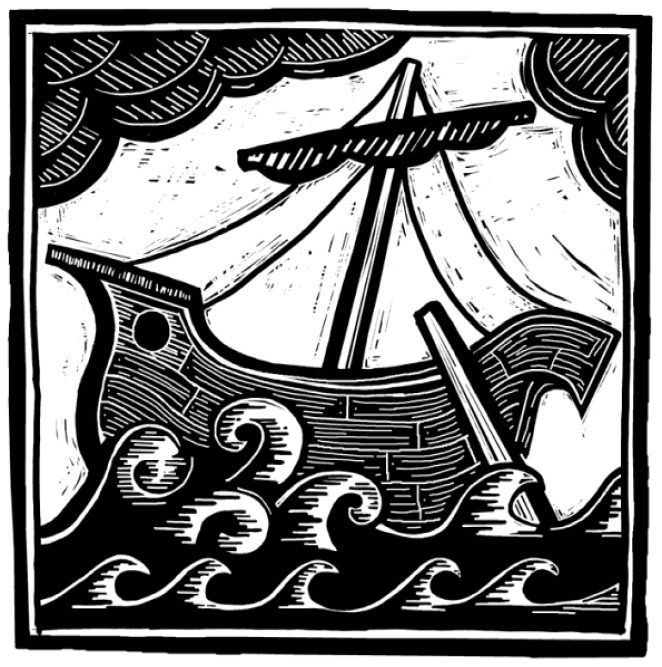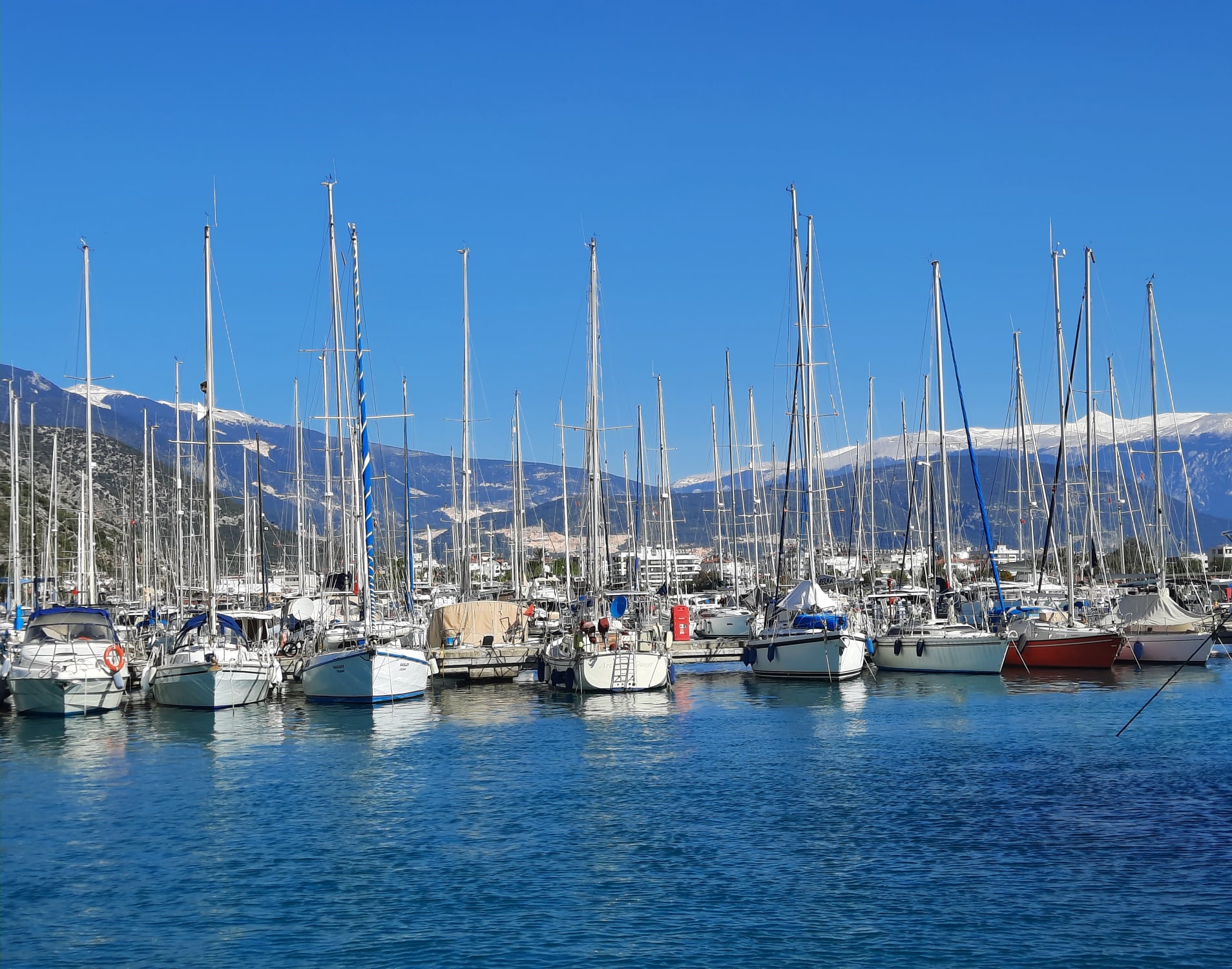#5
If a tourist visits Turkey and includes an archeological site it most likely will be Ephesus, the fabulous ruins of an incredibly wealthy and powerful city familiar to anyone with some biblical knowledge. Ephesus is so popular that there are actual foot-traffic jams on the main street during the summer.
The ports of ancient Lycia along the southern coast of Turkey are the opposite. You will rarely find any tourists at all in some of the incredible ruins of once thriving seaports. A goat perhaps, or even a band of wild pigs charging reverently across some mosaics in a 5th century church, but otherwise you can explore in solitude these once thriving ports into which Paul sailed.
On the mini-chart below you can find Patara and Myra, the two southernmost seaports depicted. The next seaport to the right of Myra is Limyra, just next to the town of Finike where I am on SailingActs. Continuing right, around the pointed cape and up the coast you find Olympos and Phasalis, the scene of last week’s blog. This is a map of Lycia, the white dots are the principle cities.

The Lycians were sea people, probably originating from the island of Crete, invading and establishing themselves well before 1,000 BC along the rugged coast of Asia Minor where they thrived. Eventually Lycia was recognized as a province of the Roman Empire, and Myra’s harbor Andriace on the mouth of the Myros river and Patara on the Xanthos river, became two extremely important grain-shipping seaports of the Roman Empire during Paul’s time. According to Acts, Paul traveled through. This week I did the same.
 Taking the dingy, which sadly still leaks just a bit in spite of patches everywhere, I motored up the now shallow river toward the ancient harbor, a reed-choked, mosquito-infested swamp. Then using the oars I paddled out in 6-12 inches of water that remains in the once deep harbor, looking at the seafront from the point of view of Paul arriving by boat.
Taking the dingy, which sadly still leaks just a bit in spite of patches everywhere, I motored up the now shallow river toward the ancient harbor, a reed-choked, mosquito-infested swamp. Then using the oars I paddled out in 6-12 inches of water that remains in the once deep harbor, looking at the seafront from the point of view of Paul arriving by boat.
The archeologists working on the site waved, I snapped photos, and marveled at the array of impressive water-front buildings: the huge, stone granarium for storing grain shipments from Alexandria, the remains of a synagogue, water-front offices, a church, bath, and large purple dye manufacturing area next to the agora.

The archeological research and restoration are going ahead by leaps and bounds. Every new discovery further substantiates the importance of Andriace for the sea trade of the Empire, and lends credence to the story of Paul’s changing ships in Myra on his journey to Rome (Acts 27:5).

In contrast to Andriace, the water level in Patara harbor was simply too shallow and reed-filled to be navigated by dingy. I had to settle for a day of tramping through briars across sand dunes to reach all of the visible remains. Patara is simply incredible, with another granarium identical to the one in Andriace, a restored buleterion, the building in which the parliament of the Lycian League made decisions, a grand theater, a magnificent villa just now being excavated, and a recently identified lighthouse from the Roman era, one of the very few in the Mediterranean. Paul sailed by this lighthouse (Acts 21:1).
I tried to do the same, but was prevented by the workmen on the site. “No, forbidden, dangerous.”

“Just some pictures?” I pleaded.
“No.”
So I sneaked around through the bushes, and feeling like a journalist for a French tabloid within ½ mile of British royalty, I shot several pictures with my long (1 inch) camera lens of the topless lighthouse and returned to Finike and SailingActs.
It was a very good week.
One more thing about Lycian ports. Probably one of the most famous people in the whole world was born in Patara and later was bishop in Myra. Yes, St. Nicholas, a.k.a. Santa Claus, was from Lycia and like Paul, was born in a seaport.
Yesterday I got a visit from the only Christian in Finike. Although I have his name and a photo, I have decided not to publish this. “I do not tell people I am a Christian,” he explained. “I would very likely lose my job.” We talked boats and faith. His dream is to sail across the Atlantic to Cuba. His ideal of a good system, shaped by his understanding of Jesus’ message, is Cuba.
“Why would you want to visit Cuba instead of the USA?” I almost asked before thinking about how that maybe, if you area a solitary Christian in Turkey looking for a political system that makes sure Jesus’ teachings about caring for the poor are not forgotten, that the US might not rank as high as Cuba.
Distance from your home and heritage makes you look back at both with new eyes. It did for Paul. It does for a Turk who believes in Jesus. And so it should for all of us.
What do you think?


I know since living in Chile, I’ve had the opportunity to look back on church issues back home and think “It’s not really a big deal, why all the fuss. Try living where there is no church and some of these issues you’ll find are not issues at all.” This was a thought in regards to issue at my home church in the states. Another idea that has changed for me, is the goal is not to invited a friend/co-worker to church, but for me to initiate church with my friend/co-worker through reading and studying the word together.